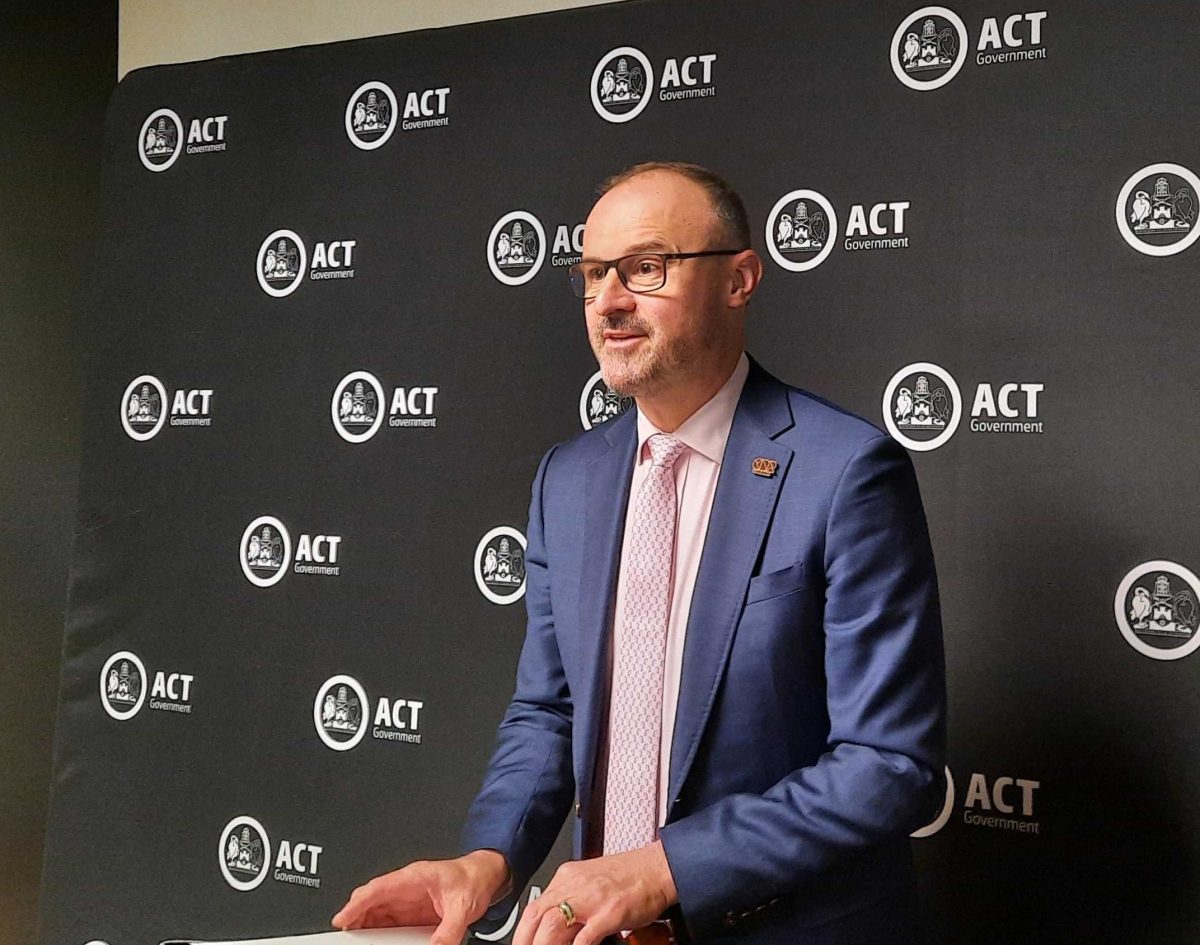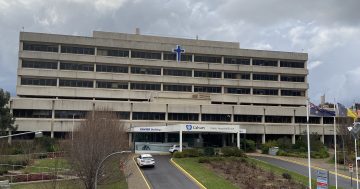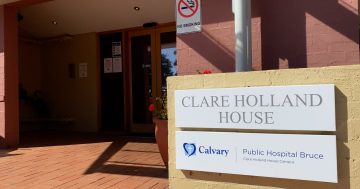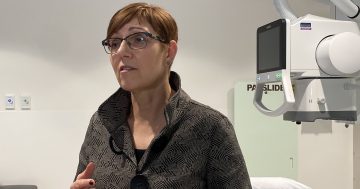
An artist’s impression of what the proposed northside hospital could look like. Image: ACT Government.
The ACT Government will take over the Calvary Public Hospital site in Bruce where it plans to build a new hospital to serve Canberra’s booming northern suburbs as part of a single public health network.
Calvary Public will transfer to ACT Government ownership and be operated by Canberra Health Services, with more than $1 billion set aside in the 2023‑24 Budget to deliver the new northside hospital that will replace it.
The government will introduce legislation into the Legislative Assembly tomorrow (11 May) to compulsorily acquire the Calvary Public Hospital land and transition existing Calvary staff and assets to the Territory by 3 July.
The shock announcement comes after what the government said was the failure of months of talks with Calvary Health Care to negotiate a new agreement, but Calvary National CEO Martin Bowles still called the decision “unexpected and unilateral”.
“Calvary is extremely disappointed in the ACT Government’s unexpected and unilateral decision to introduce legislation that effectively dissolves our partnership on public health delivery in the Territory,” he said.
Mr Bowles said it was distressing news for the hospital’s 1800 staff who were not consulted about the potential ramifications of the decision.
“Calvary will continue to provide uninterrupted, quality care to the people of Canberra while currently considering the ACT Government’s decision and next steps,” he said.
Chief Minister Andrew Barr said it was a decision that was not taken lightly but was in the best interests of the people of Canberra and had nothing to do with the fact Calvary was Catholic-run.
Mr Barr said taking over the Bruce campus and building a new hospital there would deliver a more efficient and effective health system for the city.
“This decision means a more connected health system, one that will deliver better outcomes for our workforce, for patients and for our community,” he said.
The government plans to start construction of the new hospital by mid-decade, with completion expected in 2030.
Mr Barr said the acquisition would happen on just terms including compensation but would not speculate on what amount that could be, although he noted that the Little Company of Mary had received the land for free and the ACT Government had paid for all hospital assets.
He also could not say what the sticking points were in negotiations with Calvary as they were subject to a confidentiality agreement.
Nor would he say why the takeover plans were kept from staff and the general public, only to say it was a unanimous decision of the Cabinet and government, including the ACT Greens.

Chief Minister Andrew Barr: “This is about building a more efficient and effective public hospital network in the ACT.” Photo: Ian Bushnell.
Health Minister Rachel Stephen-Smith said the takeover was needed before the new hospital was built so that it could be part of a genuinely integrated health network.
Ms Stephen-Smith moved to reassure staff that little would change for them, although she acknowledged that some may not wish to stay on.
“There was a small handful of staff that the transition team will need to work with on an individual basis, and we strongly encourage those staff to make contact with the transition team and make themselves known,” she said.
“Our clear aim is that staff will be able to keep doing the same job with the same team in a public hospital that respects the care you provide every day to patients and to each other.
“We see you, we value you, we want you to continue doing your important work, your job in your team in your hospital.”
Ms Rachel-Stephen-Smith said the short transition period aimed to minimise disruption for staff and patients.
She said one of the reasons the government preferred the Bruce campus for the new hospital was the connection it would have with the already-established private services on the site.
But having any private provider delivering the ACT’s second largest hospital would mean maintaining a fragmented system at a time when the pressure on public hospitals was greater than ever and was only forecast to grow.
“Placing the pressure on Canberra Hospital to continue to manage the vast majority of increased demand through extremely fast-paced responses is a level of inefficiency that the ACT can no longer afford,” Ms Stephen-Smith said.
She said operating a single network would not fix all of the problems with the ACT health service, but it would help.
“There are a range of areas where despite the best will from all sides, we still don’t have Territory-wide waiting lists,” she said.
“We still have unequal treatment between the northside and the southside because of our two different providers.”
This is the second time the ACT Government has moved to acquire Calvary Public after an aborted bid more than a decade ago, but Mr Barr said circumstances had now changed.
“Certainly, the city’s growth, the need for a much larger hospital on the northside are all factors that we’ve considered together, of course, with the opportunities that an integrated health system will deliver,” he said.
“We believe the benefits outweigh the risks.”
Mr Barr said the decision was not a reflection on the care that Calvary Public had provided over the last 44 years.
“Calvary Public Hospital has provided outstanding service to Canberrans over more than four decades and we acknowledge and honour that,” he said.
“This is about building a more efficient and effective public hospital network in the ACT.”
He would not speculate on what legal action Calvary might take given its contract still had more than 70 years to run.
Canberra Liberals Acting Opposition Leader Jeremy Hanson called the decision ideological and anti-faith.
“This forced acquisition of Calvary is wrong ethically, it’s wrong morally, it’s wrong legally and it’s wrong procedurally, and they’re trying to ram this through following secret backroom deals,” he said.
Mr Hanson said the decision would be a disaster for health in the ACT.
“It’s going to be bad for patients, it’s going to be bad for clinicians, it’s bad for the territory,” he said.
Mr Hanson said the government could potentially waste hundreds of millions of dollars to forcibly acquire a hospital that was already providing a great service.
He again called for a Royal Commission into health in the ACT.



















